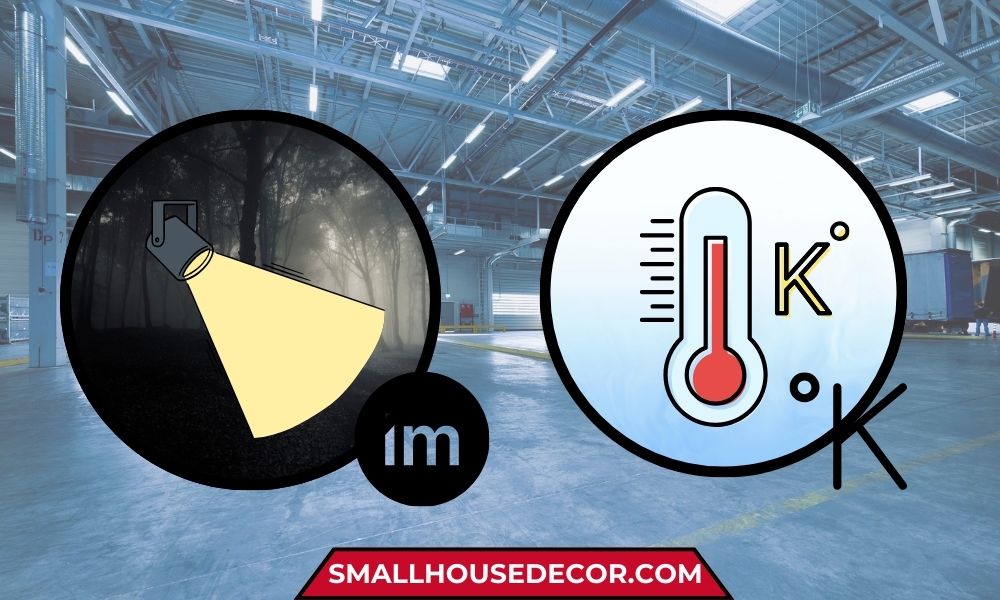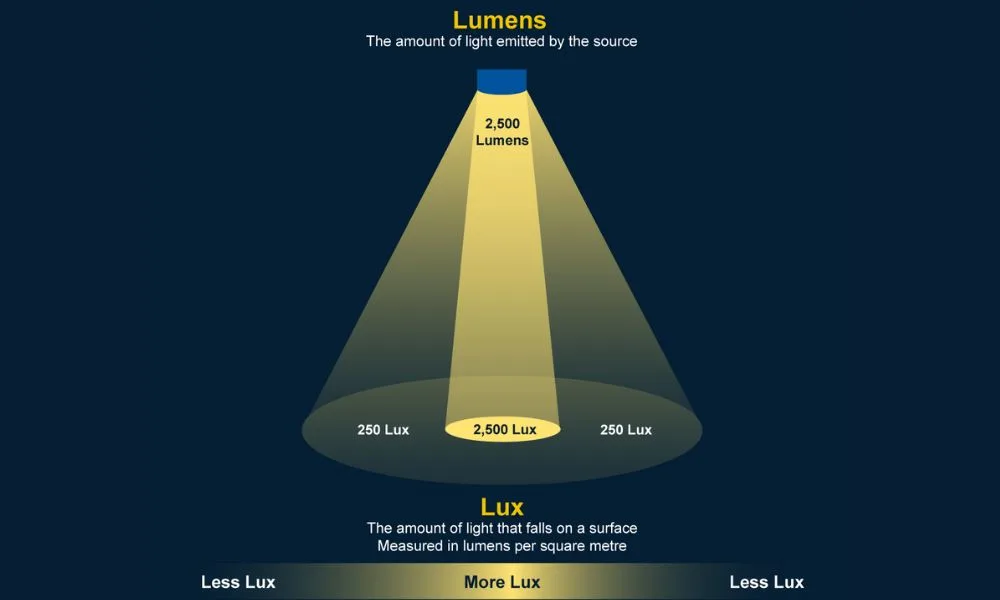It’s a common misconception that you can convert lumens to Kelvin or vice versa. This confusion often arises because both terms are used to describe light, but they actually measure entirely different properties.
This guide will clarify the distinction between lumens and Kelvin, explaining why a direct conversion is not possible.

Lumens To Kelvin Calculator – Is That Even Possible?
Lumens and Kelvin measure fundamentally different aspects of light, so a direct conversion between them is impossible.
What are Lumens?

Lumens (lm) are a measure of the total quantity of visible light emitted by a source. It quantifies the overall “brightness” of a light source to the human eye.
The higher the lumen value, the brighter the light appears. This measurement is based on the sensitivity of the human eye to different wavelengths of light, as defined by the luminosity function.
What is Kelvin?

Kelvin (K) is a unit of thermodynamic temperature, used in the context of light to describe the color temperature of a light source.
It refers to the color of light emitted by a theoretical black body radiator heated to a specific temperature. Lower Kelvin values (2700-3000K) correspond to “warm” colors like yellow and orange, while higher Kelvin values (5000-6500K) correspond to “cool” colors like blue and white.
Why Can’t You Convert Lumens to Kelvin?
The key reason why you can’t convert lumens to Kelvin is that they measure fundamentally different aspects of light:
- Lumens: Quantity of light (brightness)
- Kelvin: Color of light
Imagine you have two light bulbs, both emitting the same amount of light (same lumens). One bulb emits a warm, yellowish light (e.g., 2700K), while the other emits a cool, bluish light (e.g., 5000K).
They have the same brightness but different colors. This illustrates that there’s no direct mathematical relationship to convert between these two independent properties.
Scientific Statement:
The relationship between the physical properties of light (radiant flux, spectral power distribution) and their perceived characteristics (luminous flux, color appearance) is complex and depends on the human visual system.
The CIE (International Commission on Illumination) has established standardized models and functions, such as the photopic luminosity function and color matching functions, to quantify these relationships. However, these models do not provide a direct conversion between luminous flux (related to lumens) and color temperature (Kelvin).
Lumens To Kelvin Conversion : Analogy
Think of it like this:
- Lumens measure the amount of light. It’s like measuring the volume of water flowing from a faucet.
- Kelvin measures the color of the light. It’s like measuring the temperature of the water, whether it’s hot or cold.
You can have a large volume of cold water (high lumens, high Kelvin) or a small volume of hot water (low lumens, low Kelvin). The volume and temperature are independent of each other.
In the same way:
- A bright light (high lumens) can be warm white (low Kelvin) or cool white (high Kelvin).
- A dim light (low lumens) can also be warm white or cool white.
Therefore, there’s no formula or conversion chart to go directly from lumens to Kelvin or vice versa.
When choosing lighting, you need to consider both factors separately:
- Lumens: Decide how much light you need for the space or task.
- Kelvin: Choose the color temperature that creates the desired atmosphere.
I hope this clarifies things!
Conclusion
While both lumens and Kelvin are important for characterizing light, they serve distinct purposes. Lumens tell you how bright a light is, while Kelvin tells you what color it is.
Therefore, it’s essential to understand that a direct conversion between lumens and Kelvin is not possible due to their fundamentally different nature. When choosing lighting, consider both factors to achieve the desired brightness and ambiance.
Also Read: Want to learn more about LED efficiency and performance? Check out the Fast facts about LED lighting to see how lumens and Kelvin impact your lighting choices.